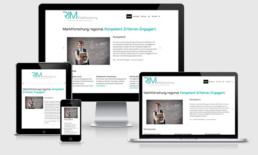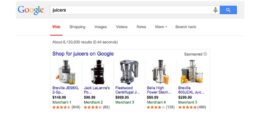Medspa Marketing
Medical Spa Marketing: a Digital Marketing Guide
(no-nonsense and field-tested!)
Medical Spa Marketing: a Digital Marketing Guide
(no-nonsense and field-tested!)
Medspa marketing refers to the strategies and tactics used by medspa businesses to promote their services, increase their visibility, and attract more clients.
Medspas, or medical spas, combine a medical clinic with a day spa that provides non-surgical aesthetic medical services under the supervision of a licensed physician.
The importance of medspa marketing cannot be overstated. Marketing plays a pivotal role in raising awareness about your brand and the services you offer. It is the best means to communicate with potential clients and inform them about what sets your medspa apart from the competition.
Perhaps what makes medspa marketing all the more vital is the high level of competition in the industry. With more and more medspas launching every day, setting your brand apart is crucial. Effective marketing strategies can help you do just that — by promoting the unique qualities and specific services of your medspa, and by highlighting your staff’s expertise and professionalism.

What is medspa digital marketing and why is it important?
Digital marketing is a crucial part of medspa marketing. With most customers researching online before booking a service, medspas need to have a robust, effective, and modern online presence. This includes a well-designed, responsive website, active profiles on social platforms, and a well-optimized online listing.
Content marketing is another important strategy in medspa marketing. This involves creating valuable, relevant content that can attract and engage your target audience. The content can be about the services you offer, tips for skincare, latest trends in aesthetics, etc.
Email marketing, i.e., sending regular newsletters and promotional offers to your subscriber list, can also be very effective. Emails can be personalized and targeted to specific groups within your audience, making this form of marketing highly efficient and profitable.
PRO TIP: Ensure digital marketing success by using the correct analytic tools and focusing on valuable metrics. For example, if phone calls are your main channel for client leads, set that up correctly as a conversion on your website.

Finally, relationship marketing can be valuable in the medspa business. Satisfied clients are often good ambassadors for your brand and can bring in more clients through word-of-mouth referrals.
In summary, medspa marketing is a broad and multifaceted area that requires time, effort, and resources. However, its importance justifies the investment. When done right, marketing can have a huge positive impact on your medspa’s success and profitability.
How to begin with medspa marketing?
Medspa marketing may seem overwhelming at first, especially for those who are new to it. The first step in starting with medspa marketing is to define clear objectives and goals. Start by asking what you hope to achieve through marketing. Is it to increase brand awareness? Attract more clients? Improve client loyalty and retention?
Once you know what your goals are, determine your target audience. Understand who your typical clients are — their age, gender, lifestyle, interests, and what they value most when choosing a medspa. This will help you tailor your marketing messages and strategies to meet these preferences and expectations.
Next, evaluate your competition. Understanding what other medspas in your area are offering, and how they’re marketing their services, can give you valuable insights and help you identify opportunities for differentiation.
When it comes to choosing the right marketing channels, a multi-channel approach is usually most effective. This could include a mix of digital marketing (website, SEO, working with a Facebook Ads Agency, email), content marketing, traditional marketing, and relationship marketing.
For content creation, consider hiring a professional copywriter or marketer who understands the medspa industry. They can create captivating, engaging content that speaks to your target audience.
Don’t forget to set a budget. Medspa marketing can come with substantial costs, from website development and SEO to social media advertising and email marketing software. It’s important to know how much you’re willing and able to spend before diving in.
Track your results meticulously. From the start, put systems and tools in place to monitor your progress. This will help you identify what’s working and what’s not, and make necessary adjustments along the way.
Finally, remember that medspa marketing is a long-term game. It might take time to see results, but patience and consistency are key to success. Keep testing, analyzing, and improving your strategies, and the results will follow.
PRO TIP: Evaluating your competitor’s campaigns means you don’t have to start from zero. Look what they are doing well, model and improve and take advantage of the readily available data modern digital marketing tools can provide.
What are the effective strategies for successful medspa marketing?
Effective medspa marketing requires a mix of multiple strategies, and understanding what works best for your specific business can help you develop a solid plan. Below are some of the most effective strategies.
1. Develop a Unique Selling Proposition (USP): A USP helps differentiate your medspa from competitors. It could be anything from innovative treatments, experienced staff, exceptional customer service, or a comfortable and luxurious environment.
2. Creating a Professional, User-friendly Website is Essential: Your website is your virtual storefront and often the first interaction potential clients will have with your medspa. Make it responsive across all devices, user-friendly, visually appealing, and ensure it provides all necessary information.
3. Optimize for Search Engines: SEO helps your website rank higher on search engine result pages. This increases your online visibility, making it easier for potential clients to find you. This involves keyword implementation, quality content, and a strong link profile.
4. Social Media Marketing Can Generate Leads: Utilizing social networks is a great way to reach and connect with your target audience. Share engaging content, promote your treatments, and respond promptly to queries and comments. Don’t forget to test Facebook Ads. Quality targeted ad creatives drive real business.
5. Leverage User-Generated Content (UGC): Request satisfied clients to share their experiences on social media, and don’t forget to repost or highlight the best UGC content on your platforms. This increases credibility and encourages others to try your services.
6. Email Marketing Stimulates Repeat Business: Collect email addresses from your website visitors, and use them to send newsletters, updates, and special offers directly to their inbox.
7. Run Special Offers and Promotions: Whether it’s a discount for first-time clients, loyalty programs, or seasonal offers, promotions can attract new clients and entice existing ones to try additional treatments.
8. Invest in Content Marketing: Create valuable and informative content about the treatments you offer, skincare advice, and latest industry developments. This not only attracts more traffic to your website but also establishes you as an expert in your field.
9. Paid Advertising Done Right Works: Paid campaigns on search engines or social media platforms can help you reach a larger audience and enhance your online visibility.
10. Tracking the Right Data: Finally, ensure you measure and track the effectiveness of your strategies. Use analytical tools to understand how well your efforts are converting into appointments and adjust your strategies as necessary.
Overall, for successful medspa marketing, it’s important to regularly review and update your strategies and stay current with the latest marketing trends and best practices.
How much should I invest in medspa marketing?

Determining how much to invest in medspa marketing depends on several factors including the size, location, and revenue of your business, as well as the industry’s competitive landscape. A general rule of thumb for small businesses is to allocate between 7-8% of your gross revenue to marketing.
As a starting point, you’ll want to establish a clear and realistic budget. This should include all aspects of marketing, including website development and maintenance, SEO, content creation, email marketing, social media advertising, and potentially hiring marketing professionals or marketing agencies.
Digital marketing should take a considerable proportion of your budget, as it is typically more cost-effective than traditional methods. Besides, it also allows for better targeting and tracking of ROI. Within digital marketing, you ought to allocate funds for website updates, advertising on platforms like Google and Facebook, and tools for email marketing and SEO.
Content marketing too should receive a good chunk of your budget, as it serves a dual purpose. It helps improve SEO (by attracting links and improving relevancy for search engines) and builds trust and credibility with potential clients.
Don’t forget offline marketing efforts such as print advertising, direct mail, and event sponsorship. While they can be harder to track in terms of ROI, they can still be effective in raising brand awareness, particularly in your local community.
Remember to set aside some budget for measurement and analysis too. Tools like Google Analytics, Facebook Insights, and various CRM systems can provide valuable insights into the effectiveness of your marketing efforts, informing future investment decisions.
Bear in mind that budgets should be flexible. Review your budget and actual spending regularly, and be ready to adjust as needed depending on what is working and what isn’t. Ideally, the more your business grows, the more should be your investment in marketing.
PRO TIP: Digital medical spa marketing requires an investment. It’s not magic and won’t bring you a 5000% return on your initial investment. If you’re smart and plan well, it’s the easiest marketing channel to get a healthy return on…and then build on to scale up.
How can I increase customer engagement in medspa marketing?
Customer engagement is pivotal in medspa marketing. The more engaged customers are, the more loyal they become to your business, leading to increased repeat visits and referrals. Below are some strategies for increasing customer engagement.
1. Offer personalized experiences: Personalization makes customers feel special and builds stronger relationships. Remember their names, preferences, last purchases, and tailor your services and marketing messages accordingly.
2. Develop a strong online presence: Regularly update your website and social media platforms with engaging content. Respond promptly to comments and queries, initiate discussions, and encourage clients to get involved.
3. Create a robust email marketing strategy: Send tailored emails based on customer behavior or interests. Regular newsletters, updates, and special offers make customers feel valued and keeps your medspa on top of their minds.
4. Ensure excellent customer service: Don’t make your interaction sales-oriented only. Show genuine concern for their well-being and satisfaction. Ask for feedback and act upon it.
5. Reward loyalty: Implement a loyalty program that provides exclusive benefits or discounts to frequent clients. This not only encourages repeat business but also makes clients feel appreciated.
6. Hold events or workshops: Hosting in-house events or workshops gives clients an opportunity to interact directly with your team, learn about your services, and engage with fellow clients.
7. Educate your customers: Share informative content about skin care, dietary advice, latest trends, etc. Engaging and helpful content will make your clients value your expertise and keep coming back for more.
8. Measure and adjust: Lastly, always measure your engagement levels. Use tools and metrics to assess the effectiveness of your strategies and refine them to maximize engagement.
To sum up, increasing customer engagement in medspa marketing involves offering personalized experiences, interacting regularly, rewarding loyalty, and continually measuring and improving engagement strategies.
What are the common challenges in medspa marketing and how to overcome them?

Medspa marketing comes with its own set of challenges. Understanding these challenges can help you formulate effective strategies to overcome them.
Standing Out in a Competitive Market: The medspa industry is highly competitive. Differentiating yourself can be a challenge. To overcome this, build a strong Unique Selling Proposition (USP). Regularly update your services portfolio, invest in training staff, and build an excellent customer service reputation.
Building a Strong Online Presence: Again, a strong online presence is crucial in today’s digital age. However, it can be challenging due to constant algorithm updates and rising competition for visibility. Stay updated with the latest SEO practices, regularly produce high-quality content, invest in digital advertising, and have an engaging social media presence.
Maintaining Customer Relationships: Building and maintaining customer relationships with frequent and meaningful interactions can be difficult. Implement CRM systems to keep track of all customer interactions. Personalize marketing communications and reward loyal customers.
Balancing Costs: Marketing can be expensive, but necessary. Striking the right balance can be tough. Develop a detailed marketing budget and stick to it. Keep track of all expenses and understand the ROI of each initiative.
Keeping Up with Trends: The aesthetics industry is constantly evolving, making it difficult to keep up. Regularly researching and learning about new trends, attending industry events, networking with other practitioners, and investing in continuous education and training can help.
Regulatory Compliance: Medspas must comply with specific laws and regulations regarding advertising medical and wellness services. Make sure to understand these laws thoroughly, and consult with a legal professional if needed.
In conclusion, although medspa marketing presents numerous challenges, understanding them can help you formulate effective strategies to overcome them and achieve marketing success.
How to measure the effectiveness of my medspa marketing strategies?
Measuring the effectiveness of your medspa marketing strategies is critical to understand what’s working and what needs improvement. It helps make data-driven decisions and ensures that your marketing budget is being used efficiently. Here are ways to measure effectiveness.
Website Analytics: Tools like Google Analytics can provide insights on traffic sources, demographics of visitors, time spent on site, bounce rates, and conversion rates.
Social Media Metrics: Most social media platforms provide analytics on reach, engagement, follower growth, and click-through rates. These can give a clear picture of how your social media efforts are performing.
Email Marketing Metrics: Key metrics include open rate, click-through rate, conversion rate, and unsubscribe rate. These can help gauge the effectiveness of your email blasts.
Online Reviews and Ratings: Online reviews and ratings are direct feedback from your clients and are significant indicators of your service quality. High ratings and positive reviews will signal your success, while negative ones spotlight areas for improvement.
Client Surveys: Ask clients to fill out surveys. Their responses will give valuable feedback on what they like and what they don’t, providing a clear understanding of areas where you can improve.
Conversion Rate: It’s the percentage of visitors who become your customers. A high conversion rate normally correlates to effective marketing strategies.
Customer Acquisition Cost (CAC): This refers to the amount spent on acquiring a new customer. By tracking this, you’ll know if your marketing is cost-effective.
Customer Lifetime Value (CLV): It’s the total revenue a single customer is expected to generate for your business. A high CLV often indicates successful retention efforts and quality customer service.
Finally, the most important part of measuring effectiveness is adjusting your strategies based on what the metrics reveal. If something isn’t performing as well as you’d hoped, don’t hesitate to adjust, test new methods, and constantly iterate until you find what’s most effective for your medspa.
What social platforms are best for medspa marketing?
There isn’t a one-size-fits-all answer to which social platforms are most effective for medspa marketing because the effectiveness of a platform can greatly vary depending on different factors such as your target audience, geographical location, and the nature of your service offerings. As such, it would perhaps be more helpful to say that what really matters is not as much the platform which you use, but rather how you use it.
Understanding how to leverage the platform effectively is crucial. Each social media platform has its own unique features and tools to facilitate engagement, client acquisition, and branding. For example, Instagram offers visually appealing posts and stories, while Facebook has advanced targeting features for advertisements. So, knowing the strengths and weaknesses of each platform enables you to tailor your content and advertising strategy more effectively.
Equally important is knowing what works best. This can be achieved through careful observation and monitoring of successful competitors, staying updated with latest social media trends, as well as experimenting with different kinds of content and marketing strategies.
Testing is another key aspect. Regular testing and adjusting of your social media strategies is crucial to identify what types of content, post timings, and advertising methods engage best with your audience. This may involve A/B testing or other analytical methods to refine your approach based on real, measurable results.
Moreover, measuring your success using the right metrics is vital. These metrics could include engagement rates, conversion rates, website traffic, and other key performance indicators (KPIs) relevant to your goals. Constantly monitoring these will help ascertain the efficacy of your social media efforts and guide future initiatives.
In conclusion, while some platforms may naturally lend themselves more advantageously to marketing a medspa due to their user demographics and functionality, the key to a successful social media marketing strategy lies more in understanding how to tap into the potential of these platforms effectively.
What future trends in medspa marketing should I prepare for?
1. Personalization: Personalization in marketing will continue to be critical in the future. Customers will expect a more tailored service and experience when visiting a medspa. This could mean personalized treatments, aftercare regimes, and even marketing messages. Tools like CRM software and data analysis will help tailor marketing approaches to individual customers, improving results and client satisfaction.
2. Virtual Reality (VR) and Augmented Reality (AR): As these technologies become more prevalent, they have wide-ranging applications in medspa marketing. For instance, you could use AR to give potential customers a virtual tour of your facilities or use VR to demonstrate the results of certain procedures.
3. Influencer Marketing: As social media continues to dominate the marketing landscape, the power of influencers is only likely to increase. Medspas can benefit from partnerships with influencers who can endorse their services and create content that reaches a wider audience.
4. Video Marketing: With the popularity of video content, it is becoming crucial in marketing strategies. Short, engaging video clips on social media platforms can effectively showcase treatments and services.
5. Telemedicine: While traditionally used for healthcare, telemedicine could play a significant role in consultations for medspa treatments. Online consultations can make it easier for customers to find the best treatment for their needs without an in-person visit, expanding the potential client base.
6. Artificial Intelligence (AI) and Chatbots: AI can help in predicting potential treatment outcomes, while chatbots can provide quick customer service, answer common queries, and even book appointments.
7. Mobile Marketing: With more people using smartphones, making your medspa mobile-friendly is vital. This could mean developing an app for bookings or ensuring your website is mobile-optimized.
8. Online Reviews and Reputation Management: Online reputation will continue to be vital for attracting new customers. Regularly monitoring and responding to reviews on platforms like Google and Yelp can help cultivate a positive image.
9. Content Marketing: Helpful and informative content that provides value to potential customers will continue to drive traffic, build brand reputation, and increase conversions. Blogs, guides, or even ebooks can establish your medspa as a leader in the industry.
Get more website traffic & leads with our proven approach to digital sales and marketing.
Get more website traffic & leads with our proven approach to digital sales and marketing.
Get more website traffic & leads with our proven approach to digital sales and marketing.
Get more website traffic & leads with our proven approach to digital sales and marketing.
5 Ways Reviews Help Your Business + 9 Ways to Respond to Reviews
5 Ways Reviews Help Your Business + 9 Ways to Respond to Reviews
We’re living in an increasingly digital world, and people are using computers and smartphones more often than ever before to shop for products and services and to evaluate their buying options.
As business owners, it’s an opportunity to expand our reach by creating an online presence – who wouldn’t like more customers? However, it’s also a responsibility, because we must be prepared for customer feedback from shoppers we’ve never met.
Whether or not we offer a feedback option on our websites, customers are reviewing our performance and commenting on our business online. It’s a given in today’s marketplace.
Consumers like to rave about products or establishments that serve them well, but they also have no compunction about complaining if their needs aren’t met. These customer reviews can work to our benefit; don’t underestimate their importance.
Respect Reviews
Reviews can be a boon to any business if they’re positive. Aside from recommendations from friends and family and advertising on company websites, online reviews are the third most trusted online advertising format.
According to Nielsen’s Global Trust in Advertising Survey:
Sixty-six per cent of respondents from 60 countries reported trusting consumer reviews online, compared to 70 per cent who are confident about owned online channels.
Reviews provide a number of benefits:
- Free advertising. When people rave about your product or service in a public, online forum, rejoice. It’s advertising that didn’t cost you any money and it can provide the mass exposure that you couldn’t afford through other channels, such as television or national publications.
- Improvement in search engine results. Some search engines, such as Google, consider the number of times your business name comes up in reviews and uses that information as part of their placement algorithm. You may appear higher in their search results.
- Peer influence. As noted above 66 per cent of respondents to the Nielsen worldwide survey trust online reviews, so they can affect a decision about a product or service.
- Customer connections. Reviews offer the opportunity to get to know your customers, people whose opinions you might never hear otherwise — they might have complained aloud to friends in the past. You also have the chance to respond to both positive and negative reviews, allowing you to offer explanations and to demonstrate that you care what customers think.
- Opportunity for improvement. Suggestions made by your customers may allow you to consider improvements to your procedures or service. Reviews are another source for business ideas.
Obtaining Reviews

Now that you’ve learned more about the benefits of reviews, how can you go about getting them? The most important strategy? Ask for them.
- Familiarize yourself with platforms. Search for your business online to see which customers are using to post reviews of your work/product. Focus your attention on those your customers are using. Learn the rules that each of these key platforms applies to reviews so that you know whether incentives are allowed. Amazon, Yelp! And Google+ are common general platforms, while there are specialty platforms for certain industries, such as Trip Advisor for the travel industry.
- Tell customers directly. When you finish your job or sale, make it clear to your customers that online feedback is welcome. You can do this with a reminder included along with the invoice – it will depend on the type of business you run. However, be direct in asking for input. e.g., “If you like us, let people know by posting a comment on Google+.” You may wish to offer an incentive for reviewing performance, but it’s not required.
- Timing matters. Don’t wait months to ask for reviews, and be patient in acquiring them. Over time, a body of reviews will accumulate, but it may not happen instantly. Set up a system that prompts people to submit a review as soon as possible.
- Visual reminders. Find ways to remind customers about reviews: signs posted near the cash registers saying, “We’d love your feedback,” are an option; a selection of reviews on your website or in your newsletter is another idea. Be creative in your approach.
- Incentivize check-ins. Encourage people to check-in online at your location with an incentive. Once they do so, capture their co-ordinates and remind them to review their experience.
Responding to Reviews

We’ve already established that reviews are important, and research done by Professor Michael Luca at Harvard University shows how they can impact the bottom line: a one-star increase in Yelp! ratings led restaurants in his study to realize between five and nine per cent in increased profit. Keeping the ratings up is worth the effort.
However, not all reviews are good ones. Remember the old saying, “Take the bitter with the better”? It’s certainly true when it comes to online reviews. You may receive oceans of praise, but you’ll undoubtedly get criticism, too. As another old saying notes, “You can’t please all of the people all of the time.” Don’t expect perfection, although you can certainly strive for it.
If you receive negative reviews, it’s important not to ignore them. Think of all the people who visit your website. Do you want a negative impression to be the one that stays in their minds?
When preparing to respond to negative comments, do so graciously and sincerely. Remember that these people are passionate about your business or they wouldn’t have taken the time to write. Use this as an opportunity to show that they matter to you and to turn their negative feelings around.
-
- Take a deep breath. Don’t respond in anger. You may feel better if you vent your frustrations, but doing so online will only alienate your customers. They expect you to be above such petty behaviour. A moment of relief can lead to a loss of profits.
- Cordiality, not defensiveness. This is a public relations exercise designed to smooth the waters. It will be read by thousands of people over time. Demonstrate that you are professional and maintain a friendly tone.
- Don’t get personal. Even if your business is your baby, remember that the customer is expressing genuine feelings – we’re all entitled to them. It is likely to be an argument you won’t win, and it’s best to avoid burning bridges. If the reviews are inappropriate – using curses, etc. – take advantage of the platform’s reporting and removal protocol.
- Thank reviewers. Negative or positive, they’ve taken time to express their feelings. It’s input that you might not get otherwise and it might point to a problem you didn’t know existed. Thank them for their business and their feedback. If you have taken any steps to make a change or address the issue, explain those.
- Apologize for their disappointment. Focus your apologies on their negative feelings, since that is what prompted them to write in the first place.
- Reach out privately. In addition to your public response, you may want to contact the customer privately to explain what happened. Own up to a mistake if there was one and tell them about the steps you are taking to ensure it doesn’t happen again. Be honest and open.
- There may not be a good answer. Sometimes, you and the customer won’t see eye-to-eye. It’s okay to agree to disagree, as long as you do so politely.
Positive reviews are a pleasure to behold and responding to them isn’t as challenging, but a response is always nice to receive.
- Thank them. You value input and love to hear that people are pleased with your business, so tell them so succinctly. No long missives needed here!
- Don’t incentivize. As happy as you are about hearing good news, thanking a customer with incentives may seem like bribery. Instead, share some information about your business that they may not know.
After learning more about online reviews, here’s hoping you embrace them, even when they’re thorny. The more you work with them, the more comfortable you’ll be doing so.
Get more website traffic & leads with our proven approach to digital sales and marketing.
Get more website traffic & leads with our proven approach to digital sales and marketing.
Get more website traffic & leads with our proven approach to digital sales and marketing.
Get more website traffic & leads with our proven approach to digital sales and marketing.
Brand Personality - Don't Leave it to Chance
Brand Personality – Don’t Leave it to Chance
Is your brand personality desirable? Cool and confident, with a mix of the rebel thrown in? Or down-to-earth, reliable and trustworthy? If this feels like the start of a dating profile for your brand, you’re not far off the mark.
What is Brand Personality?
Whether you’re a start-up, or an established brand, having a well-defined personality is essential to creating a strong identity.
Brands that recognize the power of personality take the necessary steps and shape their brand personality with intention and purpose.
Personality is critical to success – for brands as well as people. Don’t leave it to chance!
Richard Branson
Define yourself or be defined by others. The fact of the matter is that people (consumers) give or “assign” personality traits to brands. So, how do they do this?
Generally, this assignment comes from the sum of their experiences with a particular brand.
In a nutshell, you can look at your own brand personality as the “ultimate personification” of your brand.
Apple Literally Personified Their Brand For Us and We Loved It
Don’t forget, there’s a natural fear of the unknown. It’s part of our DNA. It’s one of the reasons we reference the behavior of others.
This practice has kept us safe and allowed us to survive and prosper…not only on the school playground, but as consumers.
Customer testimonials soften the fear that most of us have. Remember, buying is an emotional decision at its core.
So does that mean you shouldn’t be self-promotional?
Not at all. Tell your prospects you’re great. Absolutely. Be proud of who you are and what you stand for.
Apple famously defined their brand personality in these series of memorable ads. The Mac guy is young, hip, and likeable. The PC guy is stuffy, rude, and generally unappealing.
Besides being clever and funny, these ads were effective because they accurately reflected the shared experiences of consumers at the time.
Who among us didn’t curse under our breath when the PC guy talked about our PC crashing or having to load program after program when we wanted to perform a simple task on our computer?
Clearly, brand personality is strongest when it resonates with consumers. When it’s real and authentic. When it matches the experiences they have actually had with your products.
It’s All About the Personality

As an individual person, you and I connect more easily with people who have specific personality traits. One of us may prefer the company of a “life of the party” type, while the other may prefer a more understated and emotionally reliable companion.
It’s no secret that we form deeper and more meaningful connections with certain types of people, and conversely, that we are unable to form connections with people who have personality traits that don’t match up well with us.
This is the same with brands. Consciously or unconsciously, brand personality shapes how people feel about and interact with your company.
As Aeker noted in her research:
If brands can be imagined by customers as human beings, by identifying themselves in a relationship with the brand, customers are more likely to prefer those with similar traits and characteristics.
So what are some brand personalities?
Aaker famously identified the brand personality dimensions of sincerity, excitement, competence, sophistication and ruggedness:
Sincerity
This factor refers to your brand’s level of authenticity. People are sceptical these days (some might even say cynical), and many of us want to do business with genuine, honest brands. The sincerity factor can be broken down into four facets: down-to-earth, honest, wholesome, and cheerful.
Think Kind.
Excitement
Does your brand get customers’ amped up? Sharing on social media with all their friends? If so, then your brand personality is likely covered under the excitement factor. This one refers to a sense of being spirited and carefree. Think of being daring, spirited, or imaginative. Young, trendy brands are often associated with this factor.
Think Red Bull.
Competence
Is your brand a leader or seen as an authority in your field? If so, then it likely falls under the competence factor. This one is characterized as intelligent, successful, and reliable. Think of brands that exhibit qualities like hard working, secure, technical, or confident.
Think Johnson & Johnson.
You now have to decide what “image” you want for your brand. Image means personality. Products, like people, have personalities, and they can make or break them in the market place.
David Ogilvy
Ruggedness
Do you want to convey a sense of unbreakable toughness? Then a ruggedness brand may be right for you. This factor is associated with being outdoorsy and tough. Its key traits include strength and resilience.
Think of Old Spice.
Sophistication
Does your brand portray a sense of aspirational luxury? Then it might give an air of sophistication. The sophistication factor is often associated with upper class style. Common traits include being glamorous, charming, and smooth.
Context Matters with Types of Brand Personality

Remember, a brand is a promise about a particular product…or your company, compared to another.
What your brand looks like, what it sounds like (your messaging) and how it acts in “real life” all impact how your customers or potential customers see and evaluate you.
And this is where context matters.
Let’s say you’re in a specialized medical field where trust, stability and a commitment to traditional research are vital components. It may be counterproductive to establish a brand personality like Virgin, that is often described as maverick and rebellious, combined with a sense of fun.
QUICK TIP
All sectors have tendencies. Certain sectors will naturally lean towards specific types of brand personality. When this becomes the assumed default…to the point of being stale and boring, there may be a unique opportunity to stand out above the noise. Think Airbnb in the short-term rental market.
Product extensions are one area where brands with strong brand personalities can find themselves in unfamiliar waters and is another example of the importance of context.
Harley Davidson is a world-class brand with a recognizable brand personality…but what were they thinking when they plunked that brand personality down in the middle of the perfume market? Harley Davidson perfume…uh, no.
Researchers have shown that brand personality can influence the perceived brand quality, the attitude to a brand, the trust in the brand, future buying intentions, and attachment and commitment to a brand. (Louis & Lombart, 2010)
Your Brand Personality in the Digital Age

We have evidence that brand personalities can affect the very existence and strength of the consumer relationship. It is a powerful tool that is underleveraged and poorly understood.
Jennifer Aaker, Professor of Marketing, Stanford
Nowadays, product characteristics like price, quality, distribution channels, packaging, etc. can easily be replicated by your competition.
The importance of differentiating a brand by using a strong brand identity and personality is more important than ever. When done well, it creates a strong competitive advantage.
It is much harder for competitors to copy a distinctive personality.
Consistency Matters

When there is inconsistency between your brand personality and the promise of your brand, consumers are confused and your brand suffers.
The basic building blocks of your brand personality include messaging, tone, imagery, design, and delivery.
- Message: when your actions consistently align with your message, your customers begin to trust you. When you’re inauthentic or can’t deliver, customers have every right to feel disappointed or deceived.
- Tone: it’s not what you say, but how you say it. It’s an expression of your company’s values and way of thinking.
- Design: using brand elements thoughtfully and strategically helps build visibility and increases customer recognition. In our highly visual world, visual identity plays a key role in the overall brand personality.
- Delivery: the delivery of your brand across channels significantly contributes to the consistency of your customer’s experience. The channels you choose (the telephone, in all the stores/locations, on the website and in face-to-face contact, etc.), as well as the frequency, all play a role in your brand personality.
Conclusion
The research is clear, brand personality matters to consumers and directly impacts sales, loyalty and direct product comparisons.
Yes, it takes purposeful planning and a consideration of all the elements that make up a brand personality.
But a distinct brand personality can make your brand stand apart from your competition.
Get more website traffic & leads with our proven approach to digital sales and marketing.
Get more website traffic & leads with our proven approach to digital sales and marketing.
Get more website traffic & leads with our proven approach to digital sales and marketing.
Get more website traffic & leads with our proven approach to digital sales and marketing.
Testimonials that Deliver Customers
Are too many of your potential customers scared to buy from you? Are you frustrated that you’re getting decent traffic to your website but your visitors seem reluctant to purchase from you or even contact you?
It may be time to have a look at your testimonials.
It’s no secret that the opinions of others matters to us. Psychologists and marketers know and utilize this principle of “social proof.”
And that’s why the right testimonials need to be a part of your marketing.
They are powerful.
90% Of Customers Say Buying Decisions Are Influenced By Online Reviews
Marketing Land
When a prospective client reads, watches, or listens to your testimonials, it’s like somebody’s whispering over their shoulder, “trust me…I felt like you…it’s gonna’ be all right.”
Their fear is fair. They don’t know you. Not yet.
And yes, you may be incredible. You may deliver the most fantastic product or service.
In fact, you may be EXACTLY what your future customer is looking for.
But they need some help to get there. And testimonials, done right, can move that needle in the right direction.
It’s especially important in the online world – where your customer may not be able to walk into your store or visit one of your locations because you’re half way around the world.
The research is pretty clear:
Customer testimonials have the highest effectiveness rating for all types of content marketing, with a rating of 89%.
Don’t forget, there’s a natural fear of the unknown. It’s part of our DNA. It’s one of the reasons we reference the behavior of others.
This practice has kept us safe and allowed us to survive and prosper…not only on the school playground, but as consumers.
Customer testimonials soften the fear that most of us have. Remember, buying is an emotional decision at its core.
So does that mean you shouldn’t be self-promotional?
Not at all. Tell your prospects you’re great. Absolutely. Be proud of who you are and what you stand for.
But make no mistake about it, another person’s positive perception of you holds more credibility than any other marketing message because:
- There is trust.
- There is an implied impartiality in a third party opinion.
They love you…other’s love you. Yup, you are the real deal!
Testimonial examples – why one size does not fit all

The prevailing and often contradictory wisdom surrounding client testimonials, is that there are hard and fast rules you MUST follow in order to successfully utilize this social currency, like:
– client testimonials need to be as specific as possible
– client testimonials should use relevant numbers
– a customer testimonial that is short and simple is best
– customer testimonials with longer stories convert better
In our experience, you need to test which kinds of customer testimonials work best for you in specific ways.
In some cases, a couple of effective sentences will perform well.
Sometimes, a story works best.
Over time, as you gather more and more testimonials, you need to test which kinds and combinations work best for you in your market.
Faces add elements of trust to testimonial examples

Real faces, real names, and company names add authenticity.
Without these trust signals, the customer testimonial is weaker.
While some industries necessitate privacy for obvious reasons, the optimal choice is to go with authentic details and a picture.
A picture will enhance the persuasiveness of honest reviews.
Video testimonials can pack a punch
Seeing a customer on-screen makes his or her statement even more credible.
If securing this type of customer testimonial is possible for you, then make it a priority. It will pay dividends. And don’t worry too much about production levels for this type of video (but do make sure the sound is decent).
Customer video testimonials feel real because they are. If a picture is worth a thousand words, then, according to Dr. James McQuivey of Forrester Research, a minute of video is worth 1.8 million words.
When a visitor lands on one of our landing pages with a video testimonial like the one above, they are 188% more likely to convert into a lead.
There are so many elements about client video testimonials that work in your favour that I could dedicate an entire post to that. But briefly, here are a few points to chew on:
- Video is the most shared brand content on Facebook (Zuum)
- A study by Comscore found that, on average, a website visitor will stay two minutes longer on a site when they watch a video.
- When we see “real” people talking…it adds a personal and human level to what can sometimes be a very impersonal online world.
QUICK TIP
A great time for an improvised video testimonial is when you’re meeting with clients or reviewing how a project went. That’s how we collected this very under-produced video testimonial you see above.
Webcam testimonials can add an element of authenticity
Sometimes, circumstance (distance, convenience, time) restrict our ability to capture a video testimonial in an ideal face-to-face environment.
Don’t worry. Nobody is expecting Steven Speilberg. Do the best you can within your given situation.
Almost everyone has a webcam or a smartphone with video options. This can add to the “realness” of the video. It can even add a little charm.
This webcam testimonial here, hit on a lot of the necessary elements of a great testimonial:
- industry context, within the use of the client’s product
- a recognized leader within the target community
- the under-produced nature of the video lends to the “realness” of the story

Encourage reviews & consider Google trusted 3rd party reviews
If you have an ecommerce site, you need to make it as easy as possible to leave a review. And make sure you place them where they can’t be missed.
This website here uses an approved third party service for collecting reviews and syndicating them to sites like Google.
Why pay to use a 3rd party independent reviewer?
We’ve all heard stories about fake reviews. The fact that these reviews are verified may create more confidence in your website visitor.
And “approved by Google” means your reviews can show up in product searches like the one shown below. This can be a critical step in performing well if you have a Google merchant account for your ecommerce site.

Customer testimonials need to be part of your processes
If you don’t have a process for collecting customer testimonials you’re hurting your current and future business.
If you know and believe what you do is good, then the world needs to know that. And hopefully, we’ve already established that hearing it from your customers and clients is the best way.
Feel like you’re begging when asking for client testimonials? Don’t! Here’s how:

Ask for feedback, and don’t use the word “testimonial” if it has baggage for you. Keep in mind, feedback can be structured. And that takes the pressure off you and your customers.
Asking customers the specific question, “can you give me a testimonial?” can often trigger the deer in the headlights look.
Not because they don’t value you or your service. But because you’re not giving them any real context and direction. You’re asking them to be creative. They may not be.
Feedback takes you out of that loop and provides you with a structured way to get:
- Honest comments about your company and what you do.
- More context about how your product or service fits into the big picture for your client.
- Details from this evaluation that could positively relate to other similar prospects.
A testimonials page, or throughout your site?
It used to be common practice to have a single dedicated client testimonials page at your website.
While this is still important in some niches, testing can show us that having testimonials at key locations of your website can have more of an overall impact.
Client testimonial placement can drastically affect your conversions. Heatmap tracking at this client site showed us that testimonials were not getting enough action where they were on the page, so we moved them to a different place and got the results we needed.

You know how important social proof is, so don’t make your customers hunt for a testimonial.
Great places to test customer testimonial placement include:
- On your homepage above the fold.
- Near your sign up form.
- In your sidebar.
- On your product page.
- On your landing pages.
When to ask for customer testimonials?
Sometimes clients feel that their customer testimonials should just happen naturally and organically. And while that does happen on occasion, it’s not a realistic approach for such a vital part of your marketing.
Ideally, for reviews, you want to ask customers when they’re happiest about what you’ve offered them, which is usually when the experience is fresh.
This online home insurance provider here asks for testimonials right after their product is purchased. That’s enabled them to incorporate a staggering number of positive reviews in a traditionally conservative industry that struggles in this area.
Some products or services require more time to deliver outcomes, so in those situations, you’ll want to be mindful of those timelines.
Conclusion
Customer testimonials and reviews can be a difference-maker in your business, as long as you use them the right way.
Take the time to create a process that allows you to gather and make the most of them.
Get more website traffic & leads with our proven approach to digital sales and marketing.
Get more website traffic & leads with our proven approach to digital sales and marketing.
Get more website traffic & leads with our proven approach to digital sales and marketing.
Get more website traffic & leads with our proven approach to digital sales and marketing.
October 9, 2015








